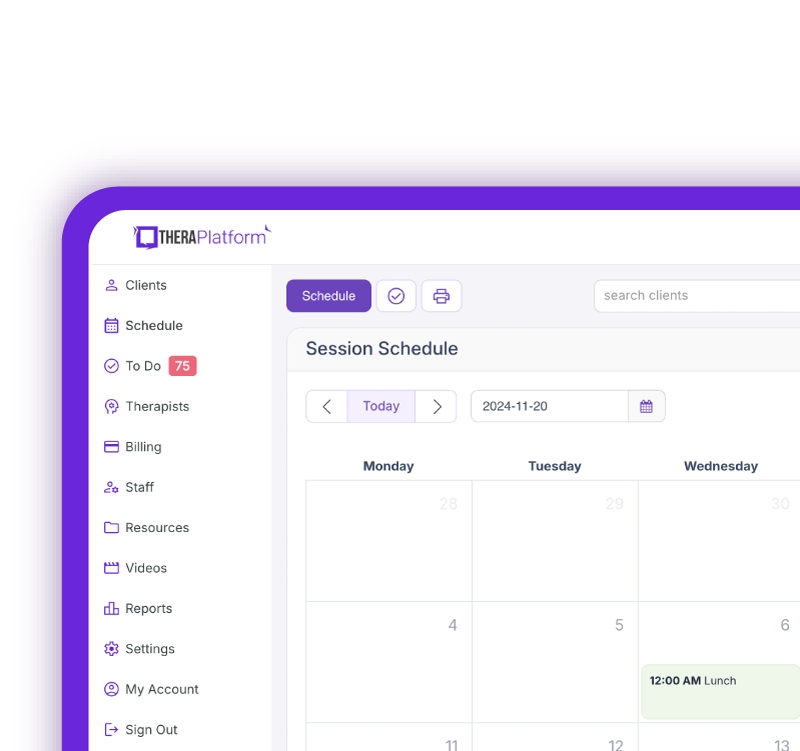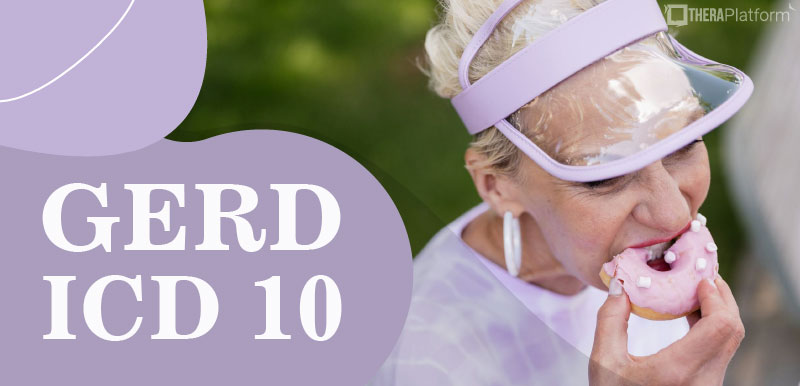ICD 10 Codes Occupational Therapy
Dizziness ICD 10 code

Dizziness ICD 10 code, R42, is a billing code used to describe a sensation of lightheadedness, unsteadiness, or vertigo that can affect balance and daily activities.
Summary
- Dizziness (R42) can significantly impact a person’s balance, safety, and independence, making accurate documentation and use of the ICD-10 code critical for justifying skilled OT services and securing reimbursement. Enrolling in an insurance billing course for therapists can help providers enhance their knowledge.
- Occupational therapists play a key role in assessing and treating dizziness, using tools like the Berg Balance Scale and Functional Reach Test, and implementing interventions such as vestibular rehabilitation, energy conservation, and environmental modifications.
- Treatment is highly individualized, focusing on client-specific triggers, safety in ADLs, and collaboration with other providers to deliver holistic care that improves functional mobility and reduces fall risk.
- By leveraging an EHR like TheraPlatform for efficient documentation and claim submission, therapists can tackle billing with ease.
→ Click here to enroll in our free on-demand Insurance Billing for Therapists video course [Enroll Now]
Dizziness can impact a person's ability to perform daily activities safely and independently, leading to an increased risk of falls and injury. They assist clients in improving balance, managing dizziness symptoms, and modifying and adapting the client's environment to minimize fall risks and create a safer living space.
Therapists play a pivotal role in providing coping strategies, educating clients and caregivers, and collaborating with other healthcare providers to provide individualized, holistic, and comprehensive care.
Streamline your insurance billing with One EHR
- Claim batching
- Auto claims
- Automated EOB & ERA
- Real-time claim validation
- Real-time claim tracking
- Aging and other reports

Common causes of dizziness
There can be numerous causes of dizziness.
Dizziness can be a result of vestibular disorders such as benign paroxysmal positional vertigo (BPPV) that “causes an intense and brief sense that you're spinning or moving.”
Dizziness can also be caused by vestibular neuritis a “condition that affects the vestibular nerve, which connects the inner ear to the brain.”
Neurological conditions such as stroke, multiple sclerosis (MS), traumatic brain injury (TBI), and cardiovascular conditions such as hypotension, anemia, or heart arrhythmias can also cause dizziness.
Some other factors include side effects of medication or anxiety disorders.
Watch this video to learn common insurance billing struggles and solutions
→ Start My Free Trial
→ Start My Free Trial
What is the Dizziness ICD 10 code?
The Dizziness ICD-10 code for dizziness is R42. Proper documentation and billing are critical in occupational therapy to ensure accurate records, receive appropriate reimbursement, and to justify intervention methods.
Utilizing the dizziness ICD 10 code, R42, is important for clients experiencing dizziness. It is crucial that therapists thoroughly document a client’s dizziness symptoms, the level of functional performance and activities, the level of impact dizziness is having on one’s ADL tasks, and how dizziness is impacting the client’s overall balance, coordination, and safety.
It is vital to document medical necessity using the Dizziness ICD 10 code by linking skilled therapeutic interventions to the client’s safety and independence to justify services and optimize reimbursement. Furthermore, thorough documentation utilizing the Dizziness ICD 10 code can serve as a valuable resource for quality assurance, research, and clinical studies, contributing to the overall improvement of occupational therapy practices and outcomes.
Practice Management + EHR + Telehealth
Mange more in less time in your practice with TheraPlatform

Assessment in occupational therapy
Occupational therapists play a pivotal role in the comprehensive assessment and management of dizziness, which can significantly impact a person's daily life and overall well-being. The occupational therapy process begins with a detailed subjective history, where therapists gather information about the client's reported symptoms, including the frequency and duration of dizziness.
They also identify potential triggers such as exposure to certain visual stimuli, stress, fatigue, dehydration, specific foods, prolonged periods of sitting or standing, or any limitations in daily activities that the client may experience.
Additionally, occupational therapists utilize standardized assessment tools to gain objective data and insights into the client's condition.
These tools may include the Berg Balance Scale, which assesses static and dynamic balance or the Functional Reach Test, which assesses balance and stability by evaluating the client's ability to reach forward while standing.
Through these evaluations, therapists can determine the impact of dizziness on the client’s balance, coordination, and overall ability to safely perform activities of daily living (ADLs) such as dressing, toileting, and bathing.
Occupational therapists may collaborate with other healthcare professionals, such as physical therapists or otolaryngologists, to develop a comprehensive treatment plan tailored to the client’s specific needs. This multidisciplinary approach allows clients to receive holistic care improving their functional independence and quality of life.
Treatment approaches for dizziness
To target interventions for clients, therapists will utilize various treatment approaches. Treatment approaches may include vestibular rehabilitation, environmental modifications, and energy conservation strategies.
VRT involves a “customized exercise plan developed from the findings of the clinical assessment, laboratory testing and imaging studies, and input from patients.”
Based on assessment findings, therapists will implement various methods of exercise including “habituation, gaze stabilization, and/or balance training.”
Habituation exercise is indicated for patients who report increased dizziness when they move around.
Gaze stabilization exercises are used to improve control of eye movements so vision can be clear during head movement.”
Therapists provide individualized and hands-on therapy focusing on balance training and stability. This involves therapists engaging patients in therapeutic activities and exercises that challenge a patient’s balance, eye, and head movements, as well as challenge their coordination, strength, and stamina. Overall, vestibular rehabilitation training or therapy (VRT) ensures that a client performs ADL tasks safely and independently.
Therapists will also focus on energy conservation by educating clients on how to pace and plan their activities effectively, manage dizziness, and adopt coping strategies to minimize or avoid triggers. These strategies may include breath work, stress management, gradual movements, proper nutrition, and hydration.
Research has shown that activities such as yoga, Tai-chi, and pilates improve balance, and coordination and “assist with implementing paced breathing, relaxation techniques, and mindfulness for stress management and acceptance.”
Pitfalls to recovery may include chronic stress and lack of follow-through of their VRT.
Those with dizziness must follow through with home programming set up by their therapist to maintain balance, safety, and overall independence in daily activities.
Therapists also modify activities and environments to enhance safety and well-being. They assess and identify potential hazards that would increase dizziness or would increase fall risk.
Based on findings, therapists implement tailored modifications to create a safer and more supportive environment. Some common environmental adaptations may include non-slip mats, improved lighting and decreasing visual triggers, and installing support bars in areas such as bathrooms and stairways to provide additional support.
Therapists may also suggest rearranging furniture to create clear pathways, reduce clutter to prevent tripping hazards, and provide advice on the use of assistive devices like walkers or canes.
Dizziness can significantly impair an individual’s ability to perform routine activities, leading to decreased independence, and confidence, and an increased risk of falls. Occupational therapists play a crucial role in the assessment and intervention of dizziness. They help clients manage dizziness by providing targeted and individualized interventions that prioritize safety, independence, and active participation in daily tasks.
Occupational therapists utilize a client-centered approach, focusing on each individual's unique needs, preferences, and challenges to develop personalized intervention plans. Additionally, by collaborating with other healthcare professionals, therapists ensure a holistic approach that enhances client outcomes and supports overall well-being.
How EHR and practice management software can save you time with insurance billing for therapists
EHRs with integrated billing software and clearing houses, such as TheraPlatform, offer therapists significant advantages in creating an efficient insurance billing process for codes like the dizziness ICD 10 code. The key is minimizing the amount of time dedicated to developing, sending, and tracking medical claims through features such as automation and batching.
What are automation and batching?
- Automation refers to setting up software to perform tasks with limited human interaction.
- Batching or performing administrative tasks in blocks of time at once allows you to perform a task from a single entry point with less clicking.
Which billing and medical claim tasks can be automated and batched through billing software?
- Invoices: Create multiple invoices for multiple clients with a click or two of a button or set up auto-invoice creation, and the software will automatically create invoices for you at the preferred time. You can even have the system automatically send invoices to your clients.
- Credit card processing: Charge multiple clients with a click of a button or set up auto credit card billing, and the billing software will automatically charge the card (easier than swiping!)
- Email payment reminders: Never manually send another reminder email for payment again, or skip this altogether by enabling auto credit card charges.
- Automated claim creation and submission: Batch multiple claims with one button click or turn auto claim creation and submission on.
- Live claim validation: The system reviews each claim to catch any human errors before submission, saving you time and reducing rejected claims.
- Automated payment posting: Streamline posting procedures for paid medical claims with ERA. When insurance offers ERA, all their payments will post automatically on TheraPlatform's EHR.
- Tracking: Track payment and profits, including aging invoices, overdue invoices, transactions, billed services, service providers.
Utilizing billing software integrated with an EHR and practice management software can make storing and sharing billing and insurance easy and save providers time when it comes to insurance billing for therapists.
Streamline your practice with One EHR
- Scheduling
- Flexible notes
- Template library
- Billing & payments
- Insurance claims
- Client portal
- Telehealth
- E-fax

Resources
TheraPlatform is an all-in-one EHR, practice management, and teletherapy software built for therapists to help them save time on admin tasks. It offers a 30-day risk-free trial with no credit card required and supports different industries and sizes of practices, including occupational therapists in group and solo practices.
More resources
- Therapy resources and worksheets
- Therapy private practice courses
- Ultimate teletherapy ebook
- The Ultimate Insurance Billing Guide for Therapists
- The Ultimate Guide to Starting a Private Therapy Practice
- Mental health credentialing
- Insurance billing 101
- Practice management tools
- Behavioral Health tools
Free video classes
- Free on-demand insurance billing for therapist course
- Free mini video lessons to enhance your private practice
- 9 Admin tasks to automate in your private practice
References
Ask the Expert: Vestibular Rehabilitation Therapy. American Academy of Audiology. (2022, February 9). https://www.audiology.org/practice-resources/public-awareness/balance-awareness-week/ask-the-expert-vestibular-rehabilitation-therapy/#:~:text=Occupational%20therapists%252%200provide%20VRT%20not,performance%20and%20quality%20of%20life
Labyrinthitis and Vestibular Neuritis. Labyrinthitis and Vestibular Neuritis | Johns Hopkins Medicine. (2021, December 13). https://www.hopkinsmedicine.org/health/conditions-and-diseases/labyrinthitis-and-vestibular-neuritis
Mayo Foundation for Medical Education and Research. (2024, November 2). Dizziness. Mayo Clinic. https://www.mayoclinic.org/diseases-conditions/dizziness/symptoms-causes/syc-20371787
Vestibular Rehabilitation Therapy (VRT). Vestibular Disorders Association. (2024, November 12). https://vestibular.org/article/diagnosis-treatment/treatments/vestibular-rehabilitation-therapy-vrt



